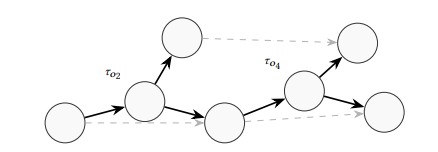DAPG: Distance-Aware Pruned Graph for Fast & Accurate ANN
A single-layer, geometry-aware pruning framework that builds compact, high-recall proximity graphs without hierarchical routing.
Abstract
DAPG introduces percentile-based local filtering and adaptive global sparsification to build degree-adaptive proximity graphs that preserve reachability while reducing redundant edges. DAPG improves latency–recall trade-offs over state-of-the-art (SOTA) baselines without multi-layer indexing.
Summary
Fixed-degree pruning assumes uniform neighborhood sizes, disregarding spatial density variations and causing suboptimal graph connectivity. DAPG introduces a percentile-based local filtering mechanism that dynamically determines edge retention per node and an adaptive global sparsification policy that caps high-degree outliers. These mechanisms produce degree-stable, path-connected proximity graphs that preserve navigability while reducing redundant edges, resulting in lower traversal cost and improved recall–latency efficiency.
Highlights
- Local percentile threshold
τv+ adaptive capT'. - Cost model:
CQ = O(¯dDAPG β(ℓ)). - LSH seeding; no hierarchy.
- Supports dynamic insertion and deletion with degree-stable connectivity.
Build
cd cppCode/DAPG
makeRun
./dapg sift # expects dataset/sift.data_newMethod Overview
Local percentile thresholds adapt to density; global caps bound branching; LSH seeds initialize search.
Cost Model
Expected query cost factorizes into average degree and expansion depth.
C_Q = O(¯d_DAPG · β(ℓ))
T_Q = O(d · ¯d_DAPG · β(ℓ))
β(ℓ) = O(log n) under small-world routingFAQ
Does DAPG require a hierarchy? single layer with geometry-aware pruning.
Can I swap the LSH backend? β(ℓ) is backend-dependent
Contact
Open an issue or email solmazsm@uw.edu.
